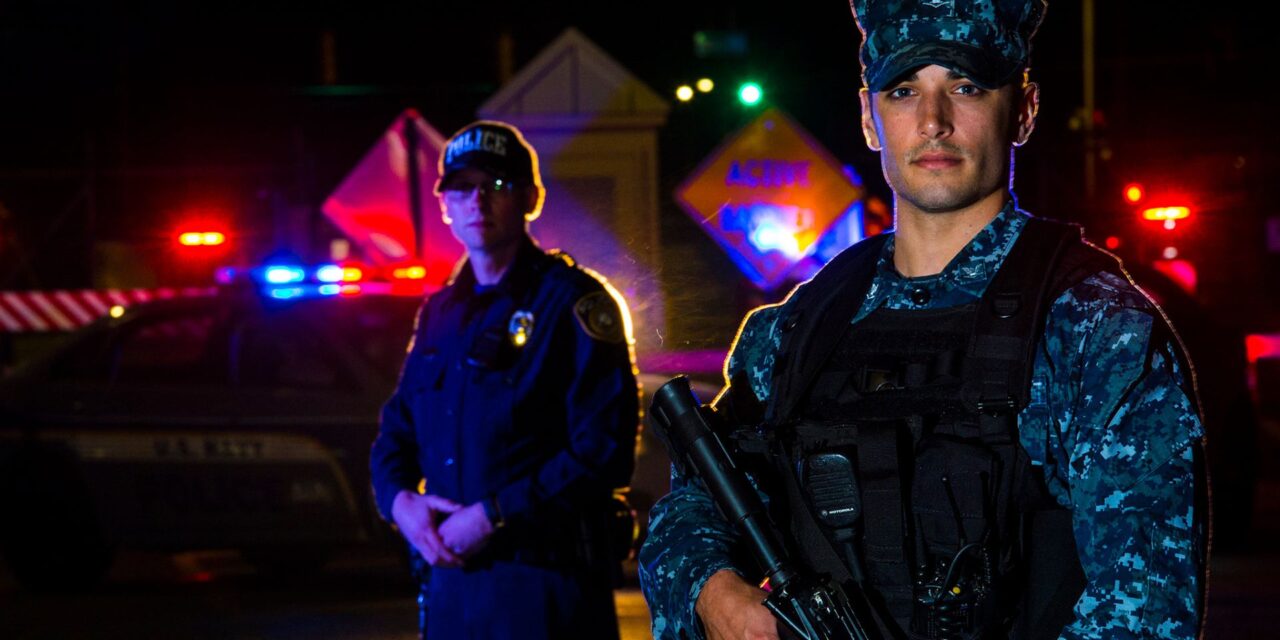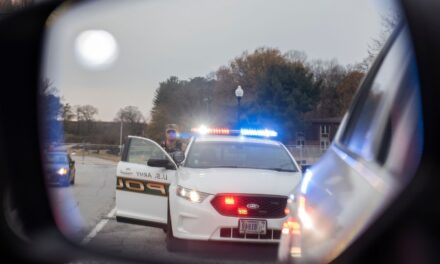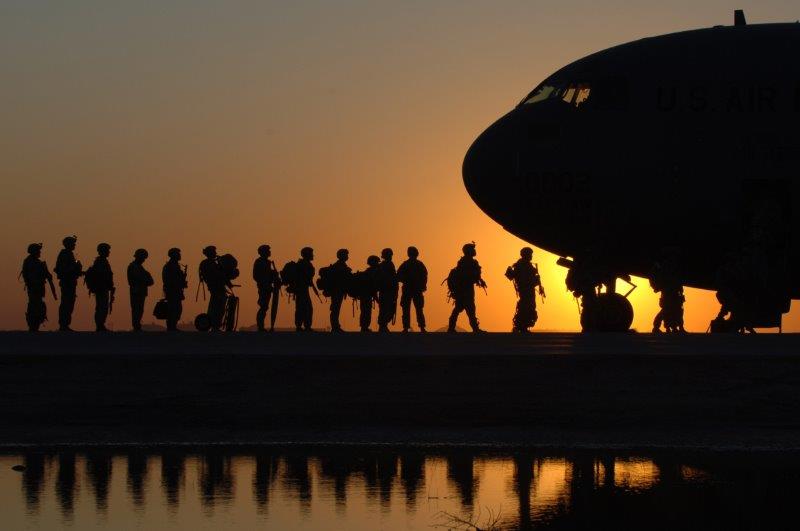Have you ever considered a career in law enforcement? Do you want to serve your country and see the world at the same time? A role in the Navy military police could be the perfect fit!
The Navy has a robust force of military police, known as Masters-at-Arms (MA), who carry out a wide range of duties related to law enforcement, security, and investigations. In this comprehensive guide, we'll explore the history of the MA rating, the day-to-day responsibilities, training requirements, career advancement opportunities, and more. Whether you're just starting to research Navy careers or are ready to take the plunge and join the MA rating, this article has everything you need to know to succeed on duty at sea!
Key Takeaways:
- The Master-at-Arms rating has a long and distinguished history dating back to 1797. MAs serve as the Navy's police force, federal agents, and security specialists.
- MAs are responsible for force protection, physical security, law enforcement, and weapons training. They serve on bases, ships, aircrafts, and in expeditionary units.
- Becoming an MA requires meeting strict eligibility standards. Candidates go through 9 weeks of initial training at MA A School, followed by additional specialized training.
- MAs can advance through the rating to become Chief Masters-at-Arms. There are opportunities for service assignments, advanced education, and leadership roles.
- A career as a Navy MA translates extremely well to federal and civilian law enforcement, security, and investigative roles after military service.
Master-at-Arms Rating
The Master-at-Arms (MA) rating has a long and distinguished history in the department of the Navy and a very unique role unlike most other military police in the military today. It is one of the oldest ratings, dating back to the establishment of the U.S. Navy in 1797. MAs serve as the Navy's military police force, federal law enforcement agents, and security and investigative specialists.
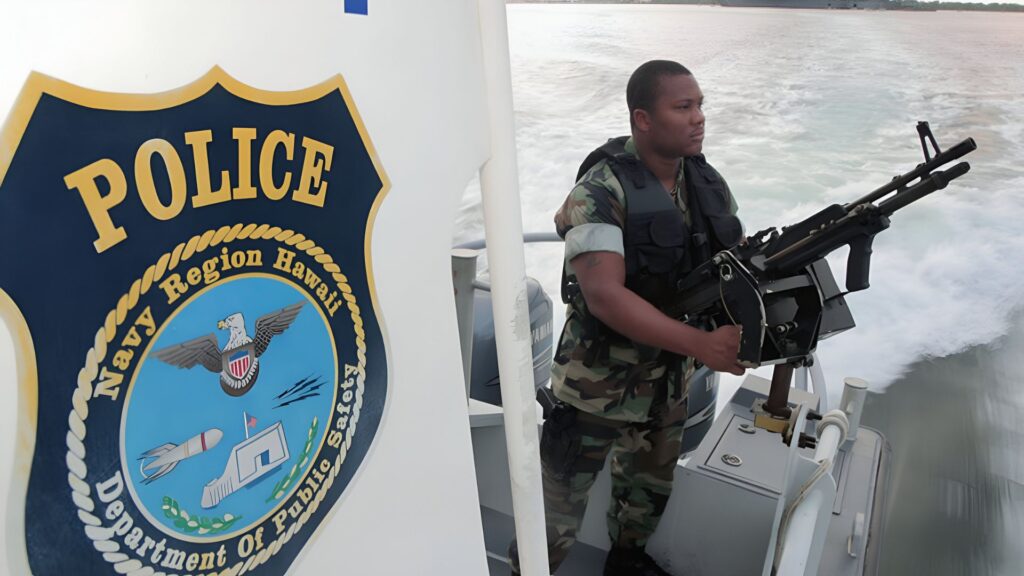
The duties and responsibilities of MAs cover a wide spectrum. At the most basic level, they are responsible for maintaining good order, discipline, and safety. This involves enforcing Navy regulations and local laws on bases and ships. MAs also play a vital role in force protection - defending personnel, information, bases, infrastructure and equipment against internal and external threats.
Specific force protection duties include:
- Conducting law enforcement patrols and investigations
- Providing physical security like access control and perimeter defense
- Executing antiterrorism measures
- Training personnel in security tactics
- Developing plans and defenses against threats
Aside from force protection, MAs also conduct specialized functions like handling military working dogs, performing corrections duties, transporting detainees, directing traffic, and providing security for special weapons and cargo. They serve as police officers, federal agents, and security experts in a variety of assignments at sea and ashore.
While MAs primarily enforce laws and regulations on naval installations and vessels, they can gain expanded jurisdiction off base through memorandums of understanding and mutual aid agreements (see our article "Do Military Police Have Jurisdiction Off Base?" to learn more about MAs' authority outside of naval property).
Approximately 10,000 men and women currently serve in the MA rating. Their motto is "Loyalty, Vigilance, and Truth." MAs take pride in their ability to uphold good order and discipline while projecting force to defend lives and resources. It's an exceptionally diverse community that requires dedication, integrity, and skill.
Training and Advancement
Becoming a Master-at-Arms involves intensive training and strict entry standards. Candidates must be U.S. citizens between 18-40 years old with a high school diploma or GED. The rating has high physical fitness standards including running, swimming, and body composition requirements.
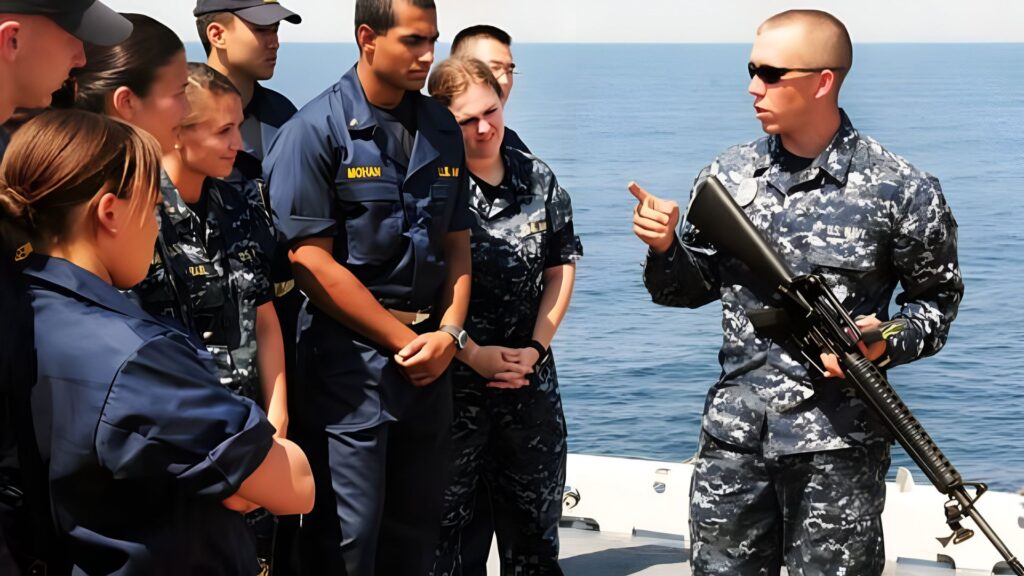
Prospective MAs also undergo thorough background screening. Some disqualifying factors include recent drug use, major criminal offenses, history of domestic violence, significant debt, and medical conditions that impair performance.
In terms of skills, strong written and verbal communication abilities are essential for the role. MAs must have a high level of mental, emotional and physical discipline. Other desired attributes include:
- Strong memory
- Attention to detail
- Ability to multitask
- Problem-solving skills
- Interpersonal skills
- Analytical thinking
Once accepted into training, new MA recruits complete 9 weeks of initial instruction at the Center for Security Forces (CENSECFOR) in San Antonio, TX. The MA A School provides classroom education, self-defense techniques, firearms training, apprehending/restraining methods, traffic control, report writing, military law, and other core skills.
After A School graduation, MAs continue training at their first command assignment. They will also complete specialized follow-on courses or C Schools related to their particular concentration like law enforcement, working dogs, corrections, expeditionary warfare, small arms instruction, antiterrorism, or protective services.
As MAs gain experience, they can advance in rank from Seaman Recruit to Master Chief Petty Officer. The rating has 9 enlisted paygrades (E-1 to E-9). Advancement depends on performance evaluations, time in service, and passing advancement exams. Outstanding MAs may become Chief Masters-at-Arms or even earn coveted senior enlisted leadership positions.
Career Paths and Opportunities
Once trained, Masters-at-Arms have incredible career options and diversity of assignments. There are opportunities to protect bases, ships, aircraft, dignitaries, prisoners, weapons, and cargo at sea and ashore both in the U.S. and worldwide.
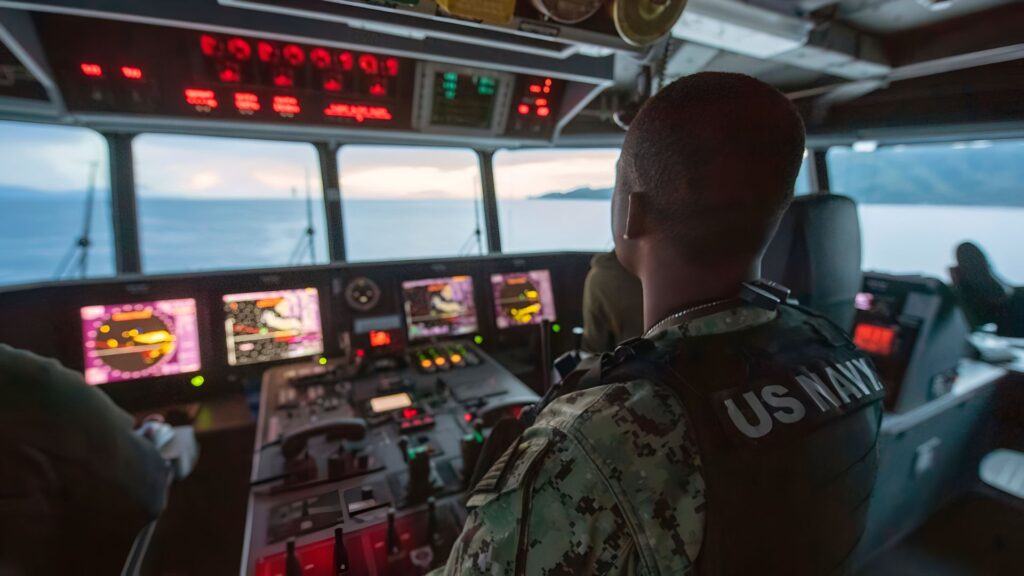
Some of the most sought-after assignments include working with elite groups like the Navy Expeditionary Combat Command, Maritime Expeditionary Security Forces, Navy SEALs, or Riverine Squadrons.
However, most MAs will start out in more traditional law enforcement roles at Navy installations and then specialize later in their careers.
Typical Career Progression of a Master-at-Arms
| Paygrade | Rank | Time in Service | Duties & Assignments |
|---|---|---|---|
| E-1 | Seaman Recruit | 0-6 months | Basic training, apprentice |
| E-2 | Seaman | 6 months - 2 years | Advanced training, junior MA roles |
| E-3 | Seaman | 2 - 3 years | Patrol officer, brig duty, shipboard MA |
| E-4 | Petty Officer 3rd Class | 3 - 5 years | Lead patrol officer, investigator |
| E-5 | Petty Officer 2nd Class | 5 - 8 years | Supervisor, expeditionary force, federal agent |
| E-6 | Petty Officer 1st Class | 8 - 12 years | Senior MA advisor, SWAT team lead |
| E-7 | Chief Petty Officer | 12 - 16 years | Department head, K-9 handler |
| E-8 | Senior Chief Petty Officer | 16 - 20 years | Command master-at-arms, academy instructor |
| E-9 | Master Chief Petty Officer | 20+ years | Rating force master chief, senior enlisted advisor |
Shore Assignments
Ashore, MAs serve as installation police and security forces. They patrol bases, provide access control at gates and piers, perform traffic control, respond to calls and disturbances, conduct investigations, and deter crime.
Large Navy bases have sizeable police forces with specialized units like K-9 teams, maritime patrol squads, criminal investigators, SWAT teams, and more. Examples of prominent shore stations for MAs include:
- Naval Station Norfolk, VA
- Joint Base Pearl Harbor-Hickam, HI
- Naval Base San Diego, CA
- Naval Base Kitsap, WA
MAs who excel in their law enforcement duties ashore may be selected for elite assignments with naval investigative services like the NCIS.
Ship Assignments
Aboard Navy vessels, MAs stand watches, patrol decks, and respond to incidents. On large ships like aircraft carriers, they maintain brigs and provide corrections services. Top MAs could earn roles in a carrier's security force managing the armory, conducting searches, and being part of the onboard SWAT team.
Common assignments for junior MAs on ships include:
- USS Nimitz (Aircraft Carrier)
- USS Bunker Hill (Guided Missile Cruiser)
- USS America (Amphibious Assault Ship)
- USS Anchorage (Amphibious Transport Dock)
Special Assignments
After gaining seniority in the rating, MAs can explore more unique roles such as:
- Maritime Expeditionary Security Forces - Provide harbor security and defend ports/harbors/waterways
- Navy Expeditionary Logistics Support Forces - Secure ports and critical supplies abroad
- Navy Information Operations Commands - Conduct information and cyber security
- Navy Recruit Training Command - Train new Navy recruits
- Military Police Investigations - Conduct felony investigations in the Navy
Furthermore, experienced MAs may be selected to attend the U.S. Army Military Police Investigations course. Graduates become federal agents who can investigate major crimes for all branches of the military.
In addition to serving on ships and bases, MAs frequently deploy to areas of operation around the world to conduct security and law enforcement in combat zones and expeditionary environments (learn more about MA deployments in our article "Do Military Police Get Deployed?").
Benefits of a Career in Navy Military Police
Aside from the incredible variety of assignments, becoming a Master-at-Arms offers many advantages.

The role comes with increased pay and benefits compared to civilian law enforcement. MAs earn steady promotions and pay raises based on time in service. There is job security with guaranteed paychecks.
The Navy also provides fully paid job training, free medical/dental care, tuition assistance for college courses, full retirement benefits after 20 years of service, and 30 days of vacation with pay earned annually.
Plus, Navy MAs can earn certain incentives including:
- Enlistment bonuses
- Re-enlistment bonuses
- Special duty assignment pay
- Sea pay
- Flight pay
- Foreign language proficiency pay
Career Advancement
The MA rating enables rapid career advancement and growth. Sailors start as Seaman Recruits and can work their way up to Master Chief Petty Officer in approximately 15 years.
Along the way, MAs gain invaluable tactical, investigative, security, and management skills. They receive ample leadership opportunities to supervise teams and run departments. Top performers can apply for the competitive MA Senior Enlisted Academy.
Transferable Skills
The specialized abilities cultivated as a Navy MA translate extremely well to careers after military service. MAs leave the Navy trained and equipped for positions in:
- Federal law enforcement (FBI, ATF, DEA, etc)
- Other federal agencies (DSS, CIA, Border Patrol, Park Police)
- State and local law enforcement
- Private security and loss prevention
MA's are well equipped to excel in any law enforcement agency after their military careers. Because of their advanced force protection knowledge, MAs are heavily recruited by government contractors and security companies as well. Their investigative talents are valued by insurance firms and corporations.
Did You Know: During World War II, some crafty Navy MAs trained pigeons for special operations. The birds covertly parachuted into enemy territory with info capsules tied to their legs and returned with messages! So next time you see a pigeon, remember it may be a veteran master-at-arms.
Education Benefits
Education is highly encouraged and supported in the MA rating. Sailors can take college classes and complete degree programs using Tuition Assistance while serving. This enables them to prepare for promotional exams, future MA jobs, and transition to the civilian workforce.
After two years of service, MAs become eligible for the GI Bill which provides generous scholarships for full college degrees or technical certifications. This benefit can be used after separating from the Navy and is worth over $20,000 per year.
In addition, military credits earned through Navy training are often transferable to college degrees. Many schools offer credit for MA A School, investigative courses, police academy training, and other military education.
Conclusion
The Navy MA rating is an outstanding option for motivated individuals seeking a challenging and rewarding career in law enforcement and security.
MAs carry on the great traditions of honor, courage, and commitment that have defined the Navy throughout history. They play an indispensable role in protecting lives, resources, and information from harm.
This career field offers immense possibilities for professional growth, leadership development, and gaining skills that translate to amazing civilian opportunities later. Plus, MA duty comes with outstanding pay and benefits.
To learn more about pursuing this career path, contact your local Navy recruiter today! With hard work and dedication, you can embark on an adventure that will span the globe enforcing the law, defending freedom, and making the world a safer place.
Frequently Asked Questions
What is the process to become a Navy MA?
Becoming an MA starts with meeting eligibility requirements and passing initial screening. You'll need to pass the ASVAB, undergo a background check, meet physical fitness and medical standards, and get a favorable security clearance determination. Basic training is 8 weeks, then MA A School is an additional 9 weeks of police, security, and law enforcement training.
What civilian careers can MAs transfer to?
The skills gained as a Navy MA translate extremely well to federal, state, and local law enforcement jobs. Many MAs become FBI, Secret Service, Border Patrol, and Capitol Police agents. Others work in private security, loss prevention, investigations, and cybersecurity. With additional education, an MA could become a lawyer, CSI, Homeland Security official, or advanced into federal leadership.
How dangerous is the job compared to civilian police?
MAs face similar dangers to their civilian counterparts. The most hazardous assignments are with expeditionary forces in combat zones and during operations to interdict criminals like pirates, smugglers, and terrorists. While the job does entail risks, the Navy provides extensive training to minimize threats. Proper tactics, equipment, and procedures greatly enhance MAs' safety.
What specialized teams and units can MAs join?
Once you gain experience in the rating, there are opportunities to apply for elite MA teams like K-9 units, maritime boat squads, investigative services, anti-terrorism teams, corrections tactical units, and additional specialized groups depending on your command. Distinguished MAs may also be selected to safeguard admirals, the President, or nuclear weapons - these roles are exclusively reserved for proven top performers.
Do MAs patrol and secure the ship by themselves or together?
On most vessels, MAs stand watches and conduct patrols with another MA or with a junior officer like an ensign. Some very large ships like aircraft carriers have sizable security departments that enable MAs to patrol in larger teams. MAs assigned to special mission units or expeditionary forces also normally operate in squads or platoons. But day-to-day shipboard duties are usually carried out in teams of two for efficiency and safety.
I hope this provides a helpful overview of the Navy Master-at-Arms rating! Let me know if you have any other questions.

